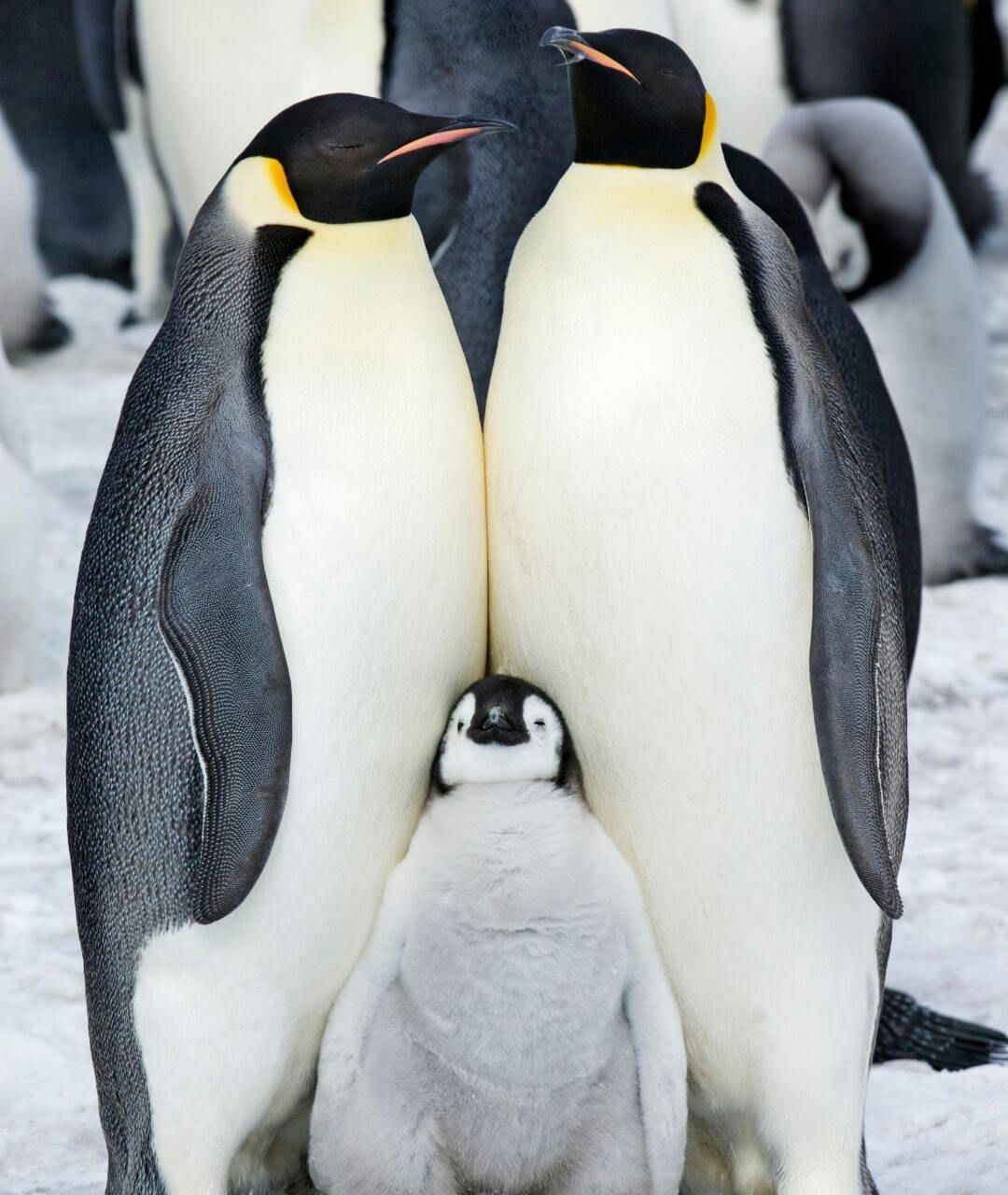Emperor Penguin
Aptenodytes forsteri
Fun Facts About Emperor Penguins
Emperor penguins have a rough, spikey tongue to help them grab onto slippery fish!
Colonies of emperor penguins can have more than 5,000 penguins.
Emperor penguins may not be the quickest on their feet, but they're pretty quick on their bellies!
Where Do Emperor Penguins Live?
Emperor penguins live on the freezing ice sheets of Antarctica! They are normally found along the coast but often travel inland during the breeding season.
What Do Emperor Penguins Eat?
Like other penguins, emperor penguins eat mostly fish and small crustaceans, like krill! Their tongue is rough to help them grab onto slippery fish.
What Do Emperor Penguins Look Like?
Emperor penguins are some of the largest birds in the world! They can stand 4-ft tall and weigh up to 100-lbs. Their large bodies and narrow wings make it impossible for them to fly. Instead, their wings act like flippers and help them swim after prey and away from predators.
Emperor Penguin Adaptations
Feet
Penguins have wide, flat feet that help them swim quickly through the ocean! They also have large claws on their feet that grip the ice as they shuffle around on land.
Feathers
Emperor penguins have amazing feathers that help keep them warm in the freezing climate! The top layer of feathers is water-resistant and keeps the penguins dry, while the thick underlayer helps trap heat near their bodies.
Flippers
While all birds have wings, not every bird uses their wings to fly. Penguins cannot fly and use their wings to swim instead! Their wings work like powerful flippers and allow them to swim more than 5-mph.
Emperor Penguin Love
Emperor penguins are known for their incredible breeding behaviors! Huge colonies will gather at inland breeding grounds where they huddle close together to stay warm. These flightless giants will attract a mate with many vocalizations and, once they find a partner, will often mate for life. Both males and females are excellent parents to the one offspring they have per year. They will keep the egg (and eventually the chick) warm and safe by carrying them around on their feet! Chicks have fluffy gray feathers that they eventually replace with thick, waterproof feathers before they go off to feed on their own.
Emperor Penguins Social Life
Emperor penguins are incredibly social species doing almost everything as a group. They swim together, rest together, and even huddle in groups for warmth. During the harsh winter season, penguins can be found in groups of several thousand! There is also safety in numbers, so living in large groups helps them avoid predators like orcas and leopards seals.
Emperor Penguin Locomotion
We know that emperor penguins are fantastic swimmers thanks to their webbed feet and flipper-like wings, but what about their locomotion on land?
Because of their short legs, emperor penguins struggle to walk. They may hobble around or even hop to move across sea ice. Luckily, emperor penguins have figured out a different way to move across land... they slide! These heavy-bodied birds will drop to their bellies and slide across the ice in a behavior known as "tobogganing."
Are Emperor Penguins Endangered?
IUCN Rating: Near Threatened
The emperor penguin's major threat is climate change. The warming climate of the Antarctic is causing the sea ice that emperor penguins rely on to melt. Emperor penguins depend on sea ice for resting, breeding, and avoiding predators and, without it, their populations will suffer. Emperor penguins are also threatened by changes in fish populations. Changes in ocean currents as a result of climate change along with overfishing are reducing the amount of fish available for emperor penguins.
You can help protect emperor penguins by reducing your impact on climate change! By limiting the number of new items you buy and reducing your energy use, you can help slow climate change. You can also make sure the fish you eat is sustainably caught.



